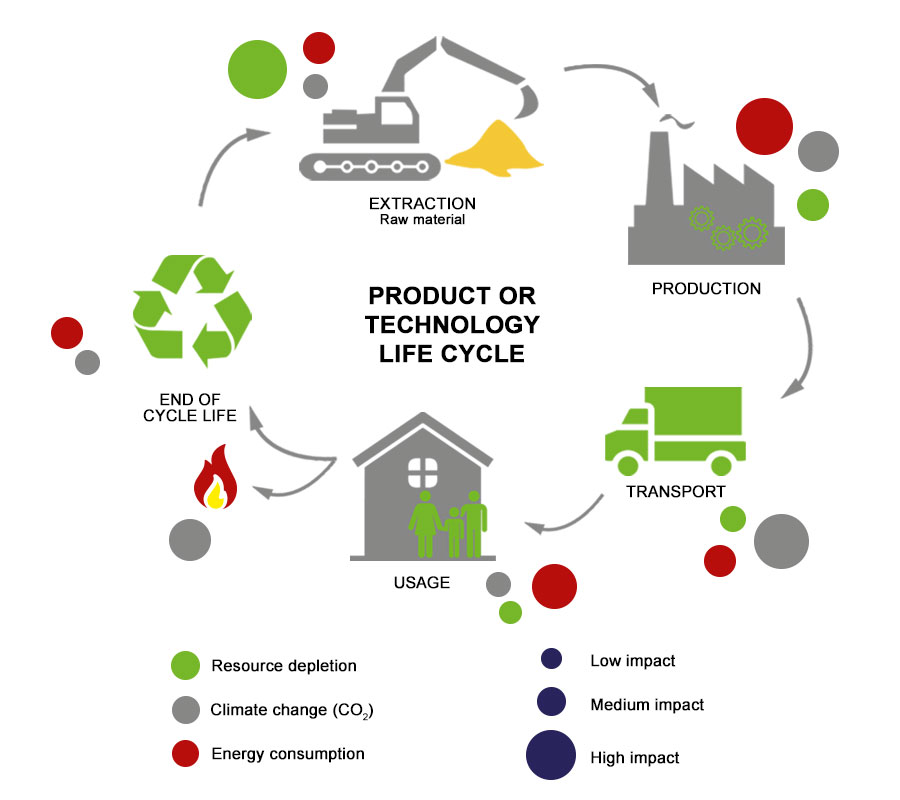Life Cycle Analysis & Technical and Economic Assessment
Leverage increasing environmental awareness to redirect technology development strategies and address economic concerns.
The CEA has always addressed the economic aspects of the energy technologies it develops. Environmental issues have taken on an increasingly important role in technology development. The CEA began investing in lifecycle analysis research a decade ago. Today, the lifecycle analysis is just as important as the technical and economic assessment when determining whether or not to move forward with a new technology.
Liten LCA services are designed to promote optimal economic performance and can be delivered in addition to technology development services. Liten can use a variety of standards to meet its partners' needs (ISO 14 040/44, ILCD Handbook). A lifecycle analysis measures environmental benefits and impacts of an innovative technology. Eco-design is based on choosing the best-performing (in environmental terms) option at each stage in the product lifecycle, from manufacturing to use, and, ultimately, recycling.

|
Global multicriteria assessment of the environmental impacts of a product or technology (lifecycle analysis)
And, for partners that would like to go further than an LCA, Liten has developed a proactive eco-innovation system to stimulate technological innovation without neglecting environmental considerations. The entire product lifecycle is factored into this approach. The system is built on four pillars: an assessment of environmental impacts, recommended solutions, innovation, and integration of environmental factors before starting development work.
To ensure that the innovations developed can be scaled up and transferred successfully, a market-driven technical and economic assessment provides a factual basis for decision-making. Liten has developed tools and models for this assessment, at scales from component to complete system. These tools are unique in that they can also be used to optimize complex energy systems and determine the necessary conditions for both efficiency and profitability.